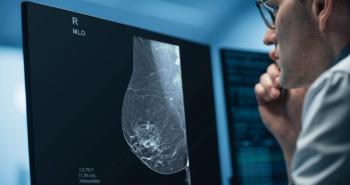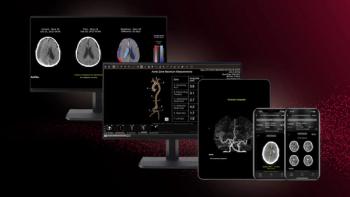
Commercial hybrids dominate GE booth at SNM meeting
GE Healthcare commercially launched its quad-slice Infinia Hawkeye SPECT/CT at the Society of Nuclear Medicine meeting. The company also kicked off a sales campaign for its 64-slice Discovery PET/CT.
GE Healthcare commercially launched its quad-slice Infinia Hawkeye SPECT/CT at the Society of Nuclear Medicine meeting. The company also kicked off a sales campaign for its 64-slice Discovery PET/CT.
Although the quad-slice SPECT/CT is a leap forward compared with its single-slice predecessor, it trails the performance potential of competing SPECT/CT systems offered by Siemens and Philips substantially. But GE is not locked into this low-power solution.
The company continues to evaluate clinical opportunities that might be approached by higher performance hybrids. Several luminary sites in the U.S. and abroad are conducting assessments with 16-slice LightSpeed CTs linked to Infinia SPECT cameras.
A different pairing, this one involving a GE Ventri gamma camera optimized for cardiac imaging and the 64-slice LightSpeed VCT, is in place at two clinical sites, one in Israel and the other in the U.S., according to Hadi Moufarrej, global general manager of molecular imaging, nuclear medicine, and PET at GE Healthcare. Such a hybrid product is one to two years away, he said. A major challenge is working through workflow issues to allow optimum exam efficiency.
For now, when it comes to SPECT/CT, GE is betting on the just released quad-slice Infinia Hawkeye. The new version, which lists for about $650,000, is ready to ship, Moufarrej said.
The new model is designed to embody practical clinical capability while accommodating the needs of nuclear medicine departments. Other aspects, including the unit's price, its service contract, and the physical size of the device, work toward that goal as well.
"If we have to reshape every department to host a big unit, that will be a huge investment for the customer," Moufarrej said.
Customers with a taste for the ultra-high end of hybrid imaging can look into GE's 64-slice PET/CT, the Discovery VCT. The company has been gathering clinical data with the device for about a month from two installations, one in the U.S. and the other in Finland. Viability and perfusion studies in the context of coronary CTAs top the list of research priorities.
GE plans to leverage its strengths in the biosciences, obtained with its acquisition of Amersham, to develop new PET agents tailored to cardiac assessments, particularly perfusion. Fluorine-based radiotracers appear to have the greatest promise as next-generation perfusion agents, according to Jim Mitchell, general manager for GE global radiopharmacy. Rubidium-82 is the only commercially available product for this type of study. FDG is well established for determining myocardial viability.
GE is driving home its message about the future of personalized medicine with a technology pavilion dedicated to molecular imaging. Presentations address GE's concept of molecular imaging and how the company plans to apply it, not only in products and capabilities but through collaborations and physician training as well.
Newsletter
Stay at the forefront of radiology with the Diagnostic Imaging newsletter, delivering the latest news, clinical insights, and imaging advancements for today’s radiologists.




























